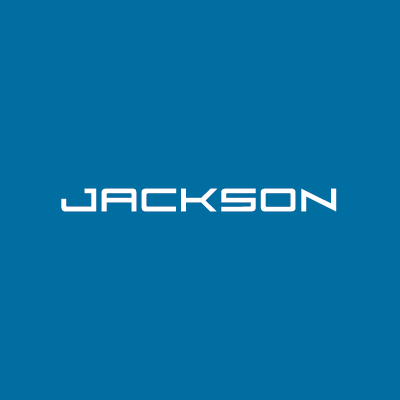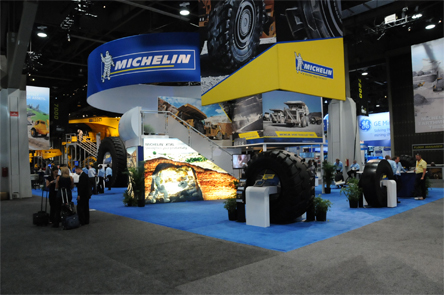In the following interview with JMG’s executive director of events and trade shows, Julie Froehlich shares insight into the trade show industry’s biggest secrets. You’ll learn what catches attendees’ attention at trade shows, how to keep costs down, how to go big and what every first time trade show-er should know.
1. What is the first thing that you notice about a trade show booth?
Consumers will be attracted to a modern and up-to-date display. They will want to see clean, crisp lines and no clutter. Your staff should be well-rested, smiling and dressed in branded apparel. This combination shows professionalism and helps you stand out as an industry leader. The saying “don’t judge a book by its cover” doesn’t apply in the trade show and marketing industry. Sorry.
2. Have you found that open-concept booths tend to be more engaging?
Attendees are attracted to open booths, absolutely. The standard 8 ft. table set in front of a back drop is just begging for attendees to grab your free pen and walk away. Get rid of that table and create an inviting entrance. Yes, even a simple 10’ x 10’ or 10’ x 20’ area can be open and engaging.
3. Does a booth need to have interactive components in order to be successful?
Technology is a big pull, yes. Having a game or the ability for attendees to explore on a screen (of any size) is appealing and attracts attendees. However, with interactive components in the booth, you will incur additional cost and the risk of the technology not working properly. If you’re ready to take those risks, great!
Be sure to plan out and test your technology well in advance, then train your staff on troubleshooting. If the gadget doesn’t work, you lose the cool factor! And you may damage the success of your booth.
4. Do you have any suggestions on how to keep costs down, but still make a big impact?
Rent vs Purchase
Most shows have booth components that you can rent at the show. While renting may seem convenient, it is more expensive in the long run. Try to avoid renting if you are attending multiple shows.
So, what should you purchase? It is better to make an initial investment in booth components that are modern, up-to-date, reusable, sturdy, able to survive shipping and handling, and able to change out graphics. Plan ahead and think about what shows you’re attending and what you’ll need for the next 2 years.
I’ve mentioned “modern” a lot, so remember: “modern” style MUST be able to handle the wear and tear of transportation to multiple shows and the constant set up/tear down. Don’t just order something that looks nice from the Internet. Use a reputable vendor who can help you source the best available components that will last for a long time.
Be Creative!
Create an intelligent, smart and “catchy” tagline that ties your brand to the industry show. You’ll appreciate how that can drive attendees to your booth.
Give Away
Invite attendees to your booth with an incentive to win something trendy. Sure, you can give away an item to every person at the show, but if you’re trying to cut costs, research and source one very nice item and conduct a drawing. The cost of one big item is easier to bear and you will still drive traffic to your booth.
Pre-Show Invitations
Common sense says that paper invitations and post cards can be expensive, so instead, create an e-blast that invites your prospects to your booth. While an e-blast has associated costs for creating and emailing, it will be money well spent.
Send invitations out multiple times prior to the show: 6 weeks, 3 weeks and 1 week out. If you have the ability to change the message each time and make it relevant to the time that you’re sending them out, do it. That will communicate more effectively, show attention to detail, and again, help you stand out among the others!
5. If the trade show budget has room for flair, what do you recommend?
Put on an Amazing Show
Draw your customer’s eye from a distance. Hang your product (big products like sedans, motorcycles, etc.) not just signs from the ceiling. If you don’t have a big product to hang, consider investing in an LED video wall, interactive touch displays, or rock star lighting.
6. Are there any tips you would give to first-time Trade Show-ers?
Follow the Rules
If you are attending a large trade show, there is typically an exhibitors’ handbook. Get that handbook early, and read EVERY page. Yes, it’s cumbersome to read a 32-page “rules and regulations” document, but it will be worth it.
Also, make plans and payments early. Typically, the closer it is to show time, the higher the fees will be for labor, storage, handling, rigging, carpet rental, etc.
Train your Staff
Don’t forget to train your staff.
Give them simple guidelines like “don’t eat in the booth, be on-time, be well-rested, don’t browse Facebook while on duty, in fact, put your phone away the entire time, and wear comfortable shoes.”
If you have ANY technology on-site, train them how to use it and how to troubleshoot issues. Give your staff key talking points and an elevator pitch to describe your product or business. Keep handy a list of frequently asked questions.
And as the leader on-site, be courteous to your staff. Give them an agenda that includes breaks to allow them to get something to eat or drink. You might be cutting costs by using your own employees, so try to make it as an enjoyable experience for them as possible. You’ll likely want them to volunteer again!
Be Prepared
Be prepared and research the other exhibitors at the show – i.e., your competition. Know where their booth is compared to yours. Use that information in planning your creative materials and artwork to drive traffic to your booth, and not theirs.
Conclusion
It’s that time of year – gearing up for 2014 trade shows. Take Julie’s advice and use this time before the holidays to get a jump start on your big plans! And remember, in the trade show industry, you can judge a book by its cover.









